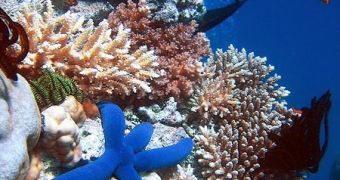One of the staples of modern Earth is its ability to support complex life forms. A new study recently looked closely at how that became possible.
We often take for granted the vast numbers of species that exist on the planet, thinking that they are a given, and that there is no other way for the Earth to be arranged.
But the reality is that this couldn't be further from the truth. When life first developed on our corner of the Universe, some 4 billion years ago, only the most basic organisms could endure.
But life persisted, and continued to develop from its unicellular to its multicellular forms. At the same time, the organisms that would later convert Earth's atmosphere began developing.
These included cyanobacteria and algae, which were able to convert the vast amounts of carbon dioxide that existed in the air into oxygen. The chemical then further went on to help complex life in developing.
But one of the main sources for this complexity that life is showing now was a large number of errors that appeared when the earliest celled organisms started to undergo the process of cell division.
In this sense, experts say, biodiversity has accompanied life on Earth since the earliest days. This took place only a few hundred million years after the planet first solidified into its current form.
“Single-celled creatures may have acquired genetic diversity early on due to simple cell division,” researchers at the Arizona State University (ASU) write in the August issue of the esteemed journal Scientific American.
One of the most important things about the first organisms to undergo cellular division is the fact that not all mutations that occurred in their genetic material were detrimental.
In fact, a large part of them worked in favor of the organism, allowing them to pick up traits that ultimately ensured they were better able to survive their environments.
“This basic fact of evolution applied to the early Earth. Variation is necessary for there to be evolution by natural selection in the first place. Biodiversity originated at the point that there was variation on which selection could operate,” says Andrew Hamilton.
The expert was involved in the new research, and he holds an appointment as an ASU assistant professor.
He is also the associate director for the history and philosophy of taxonomy at the ASU International Institute for Species Exploration, and the director of graduate programs for the Center for Biology and Society at the university.

 14 DAY TRIAL //
14 DAY TRIAL //